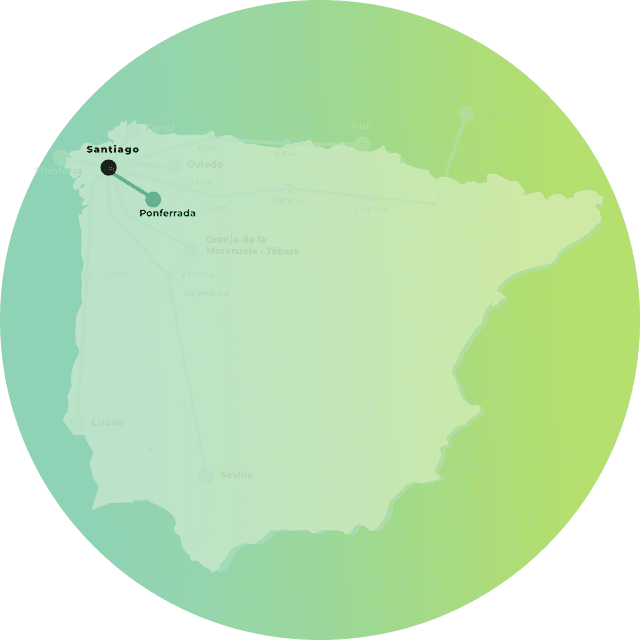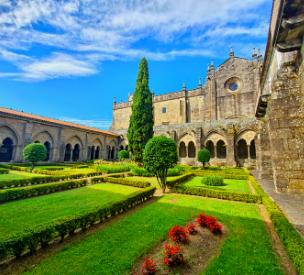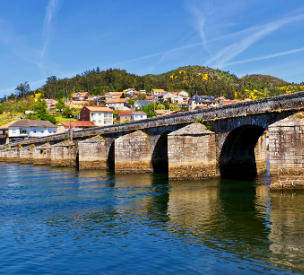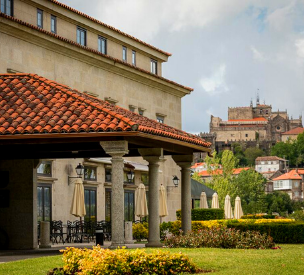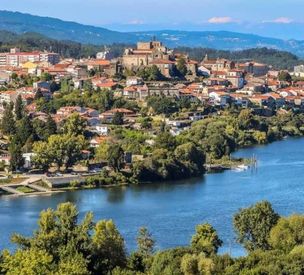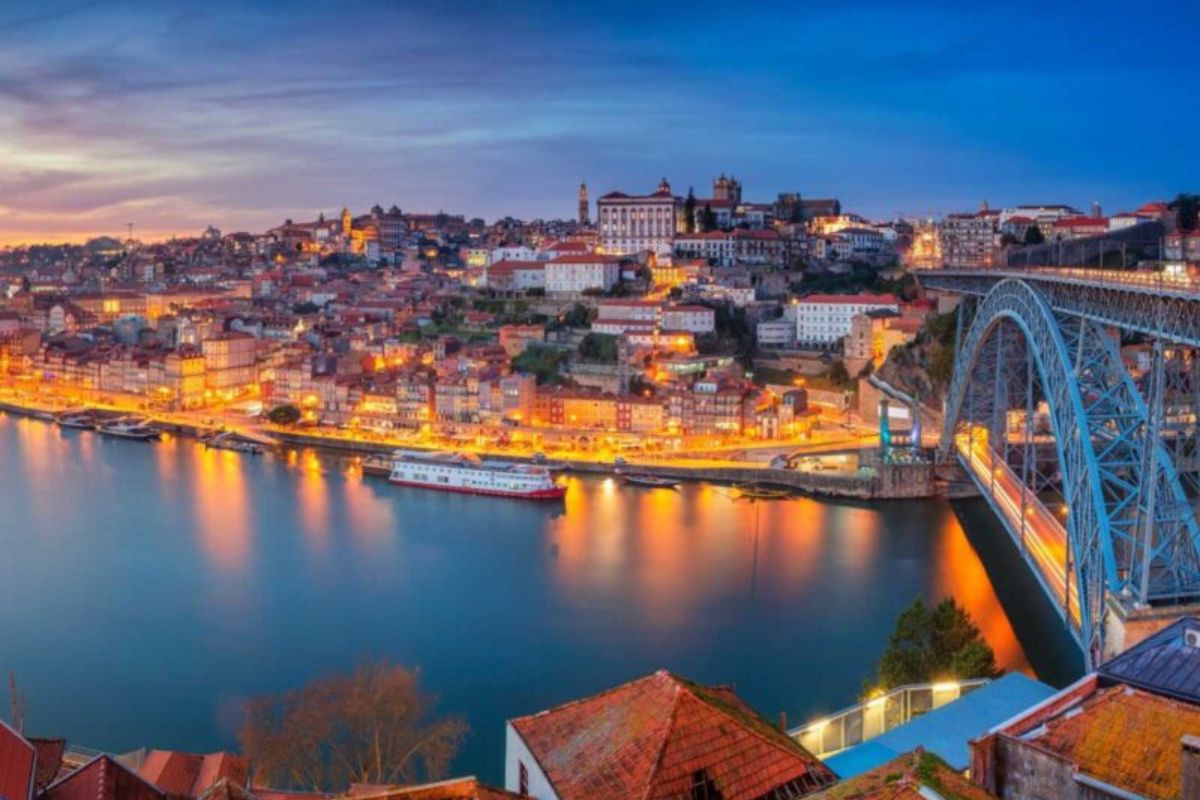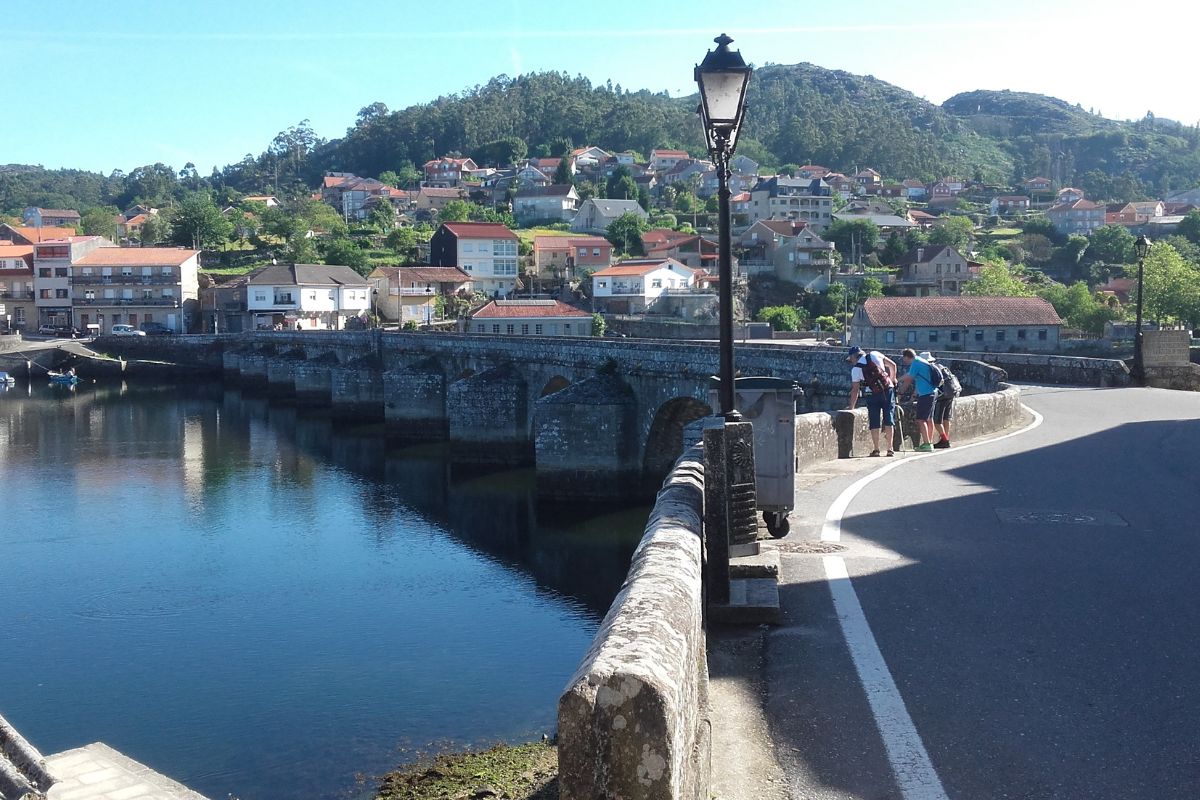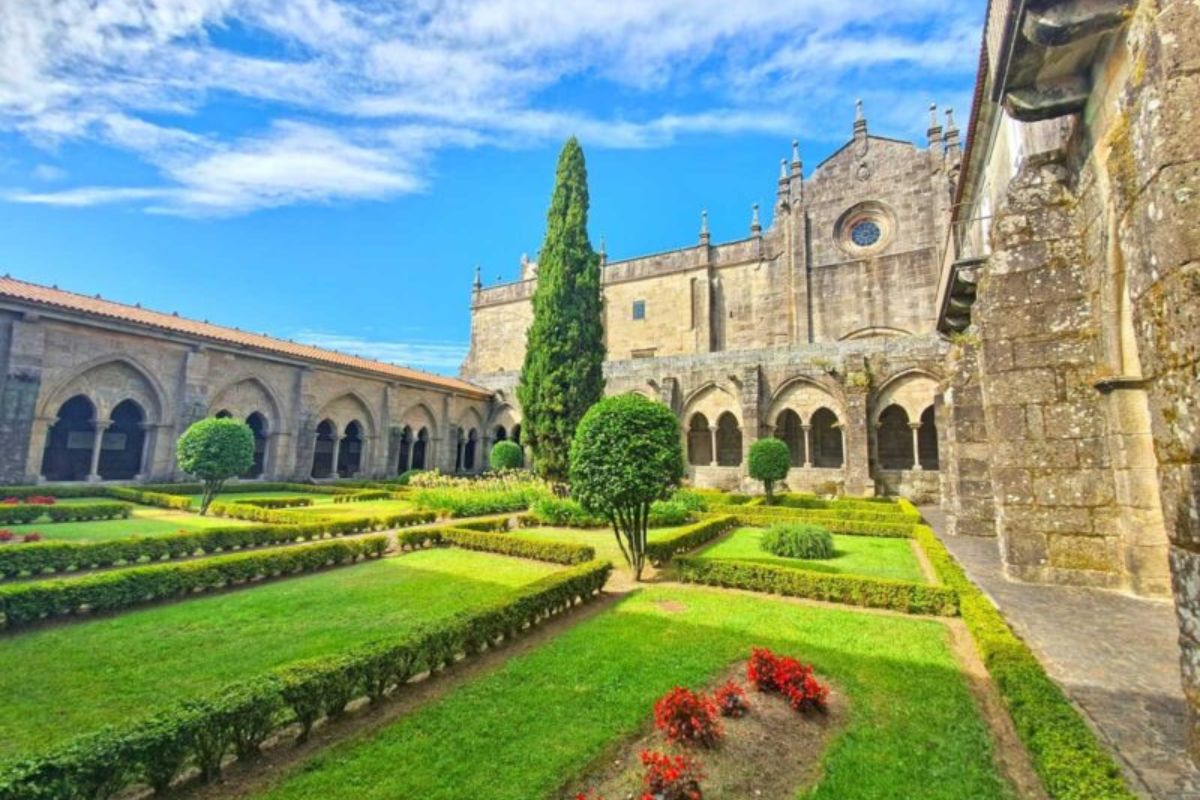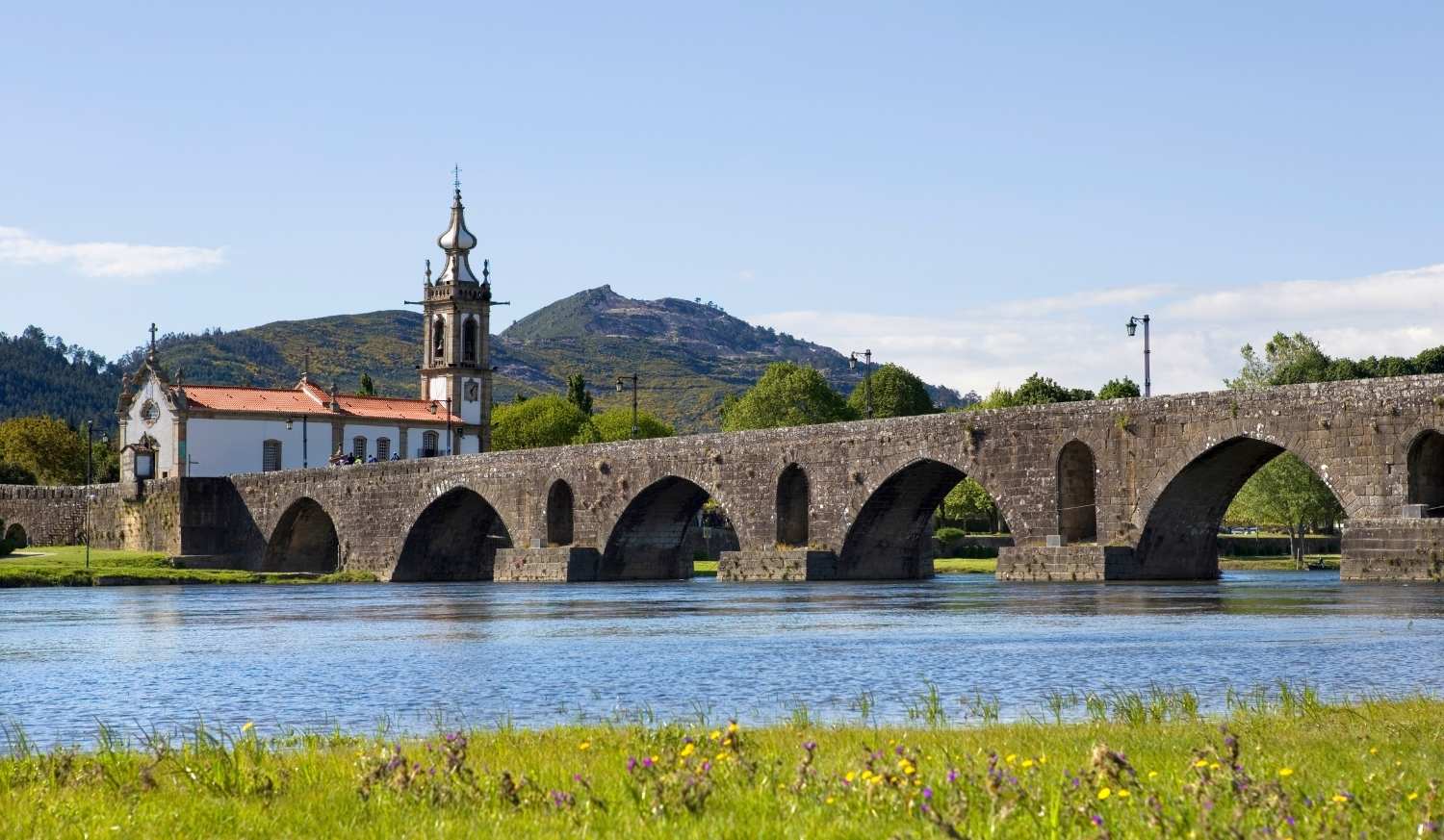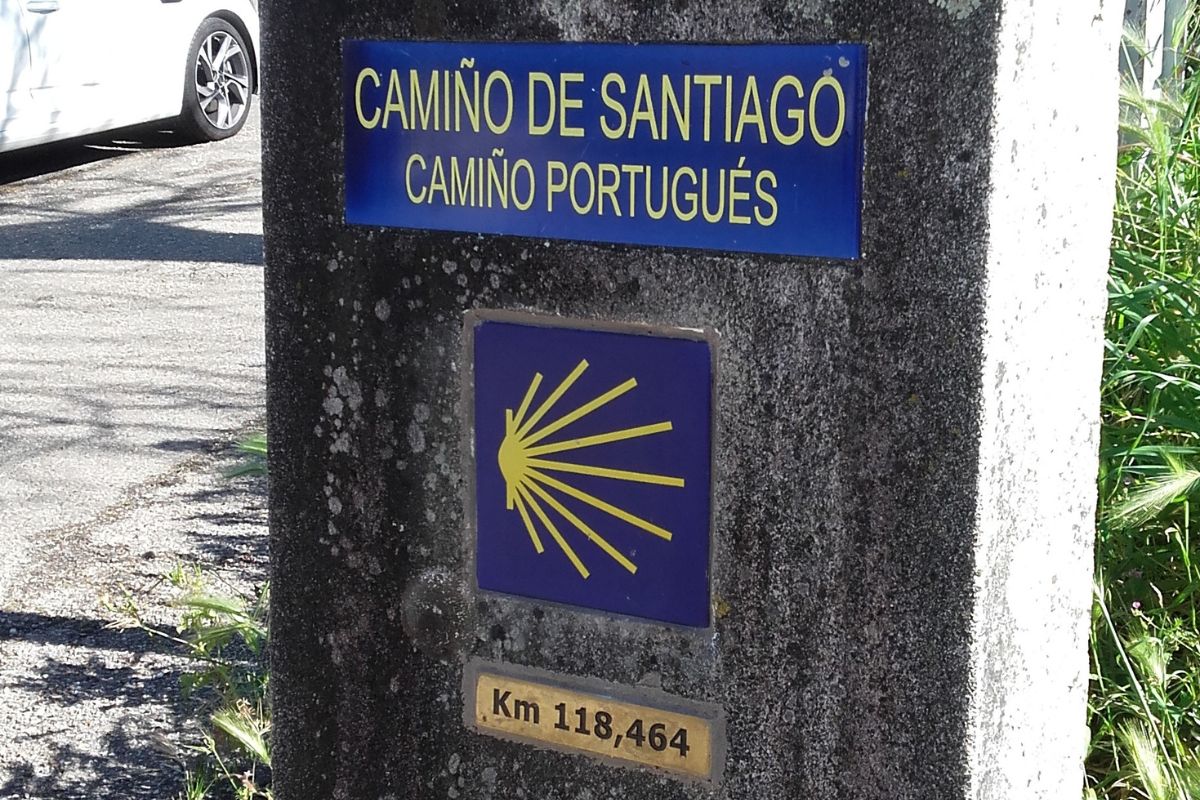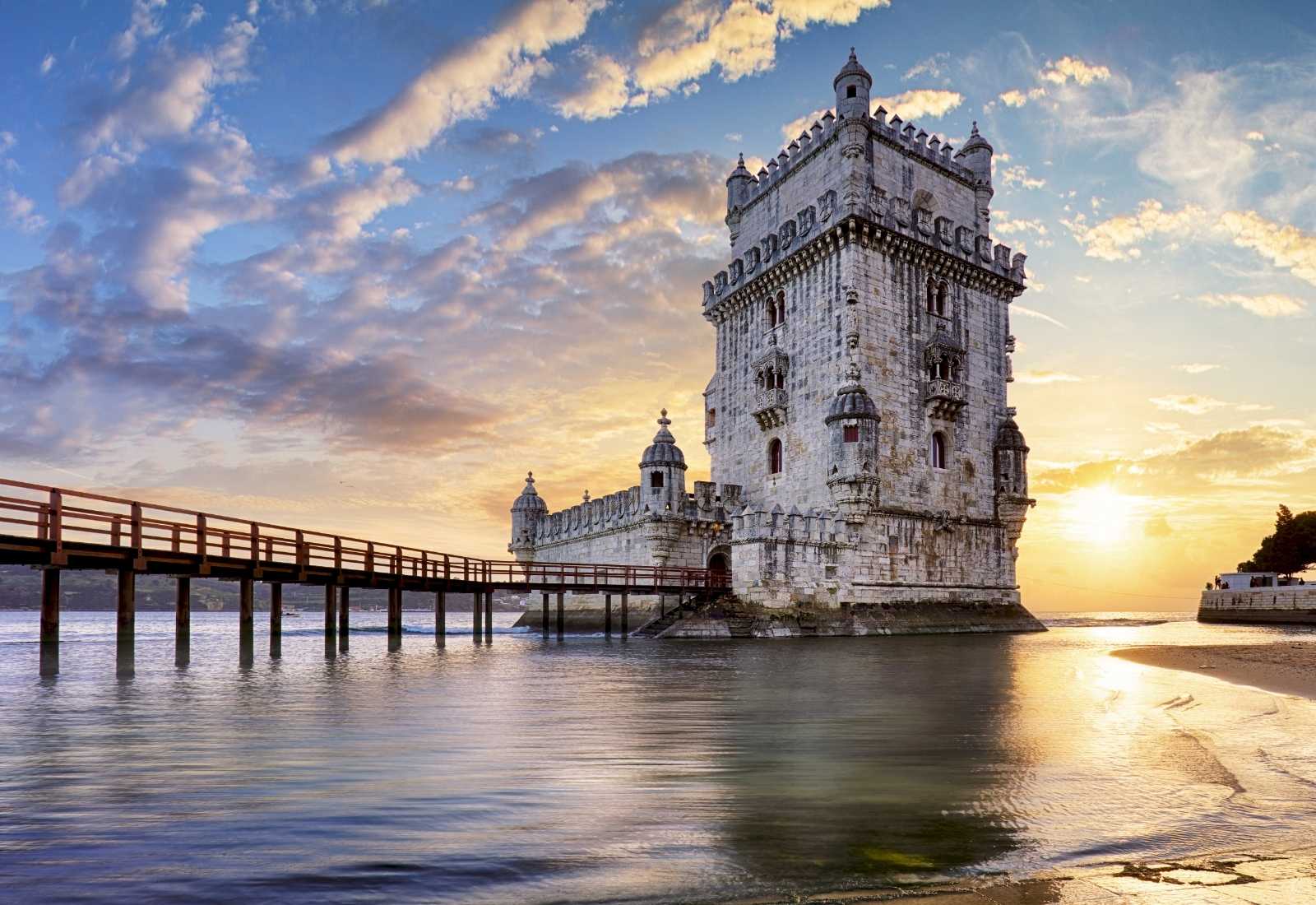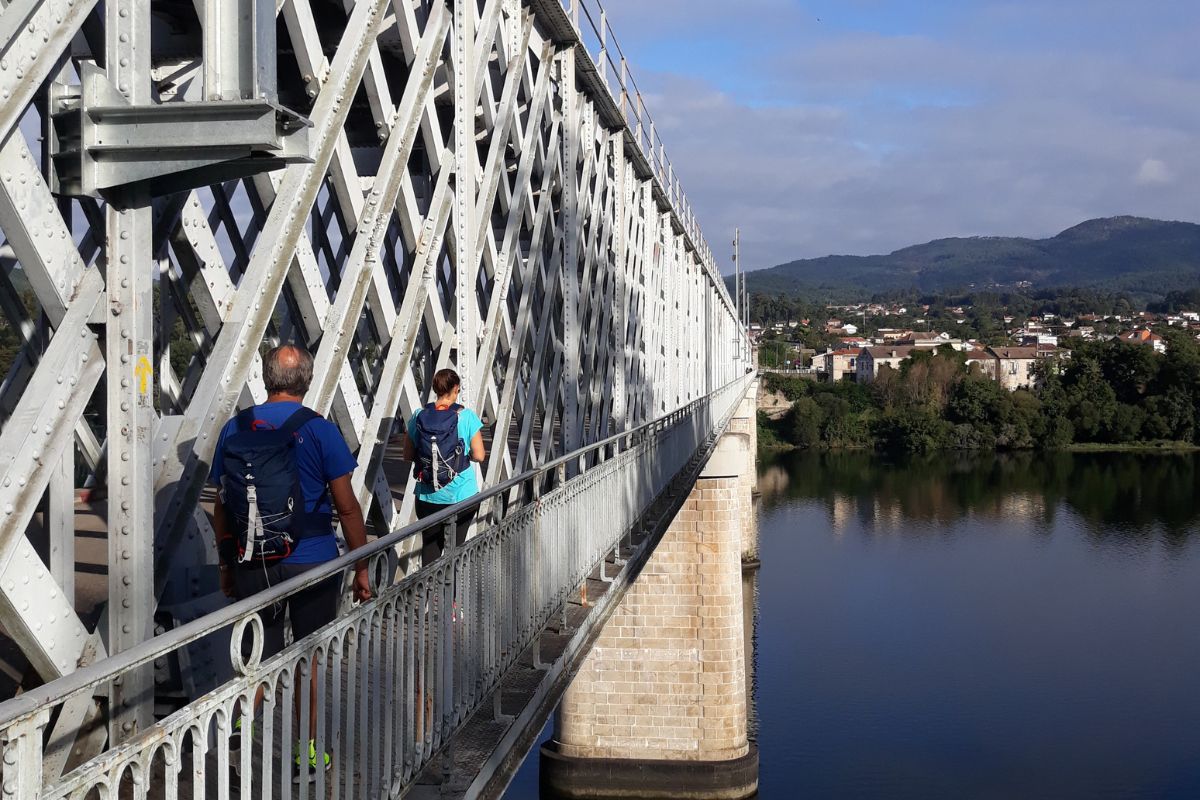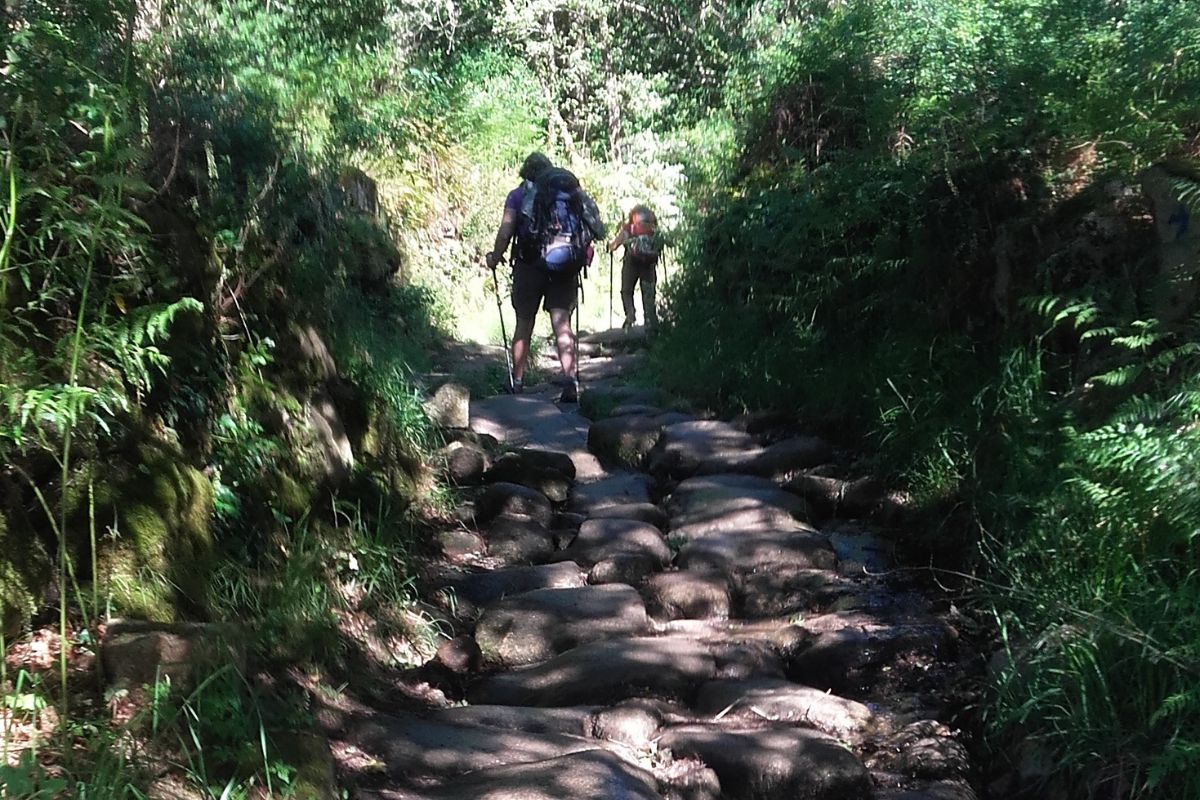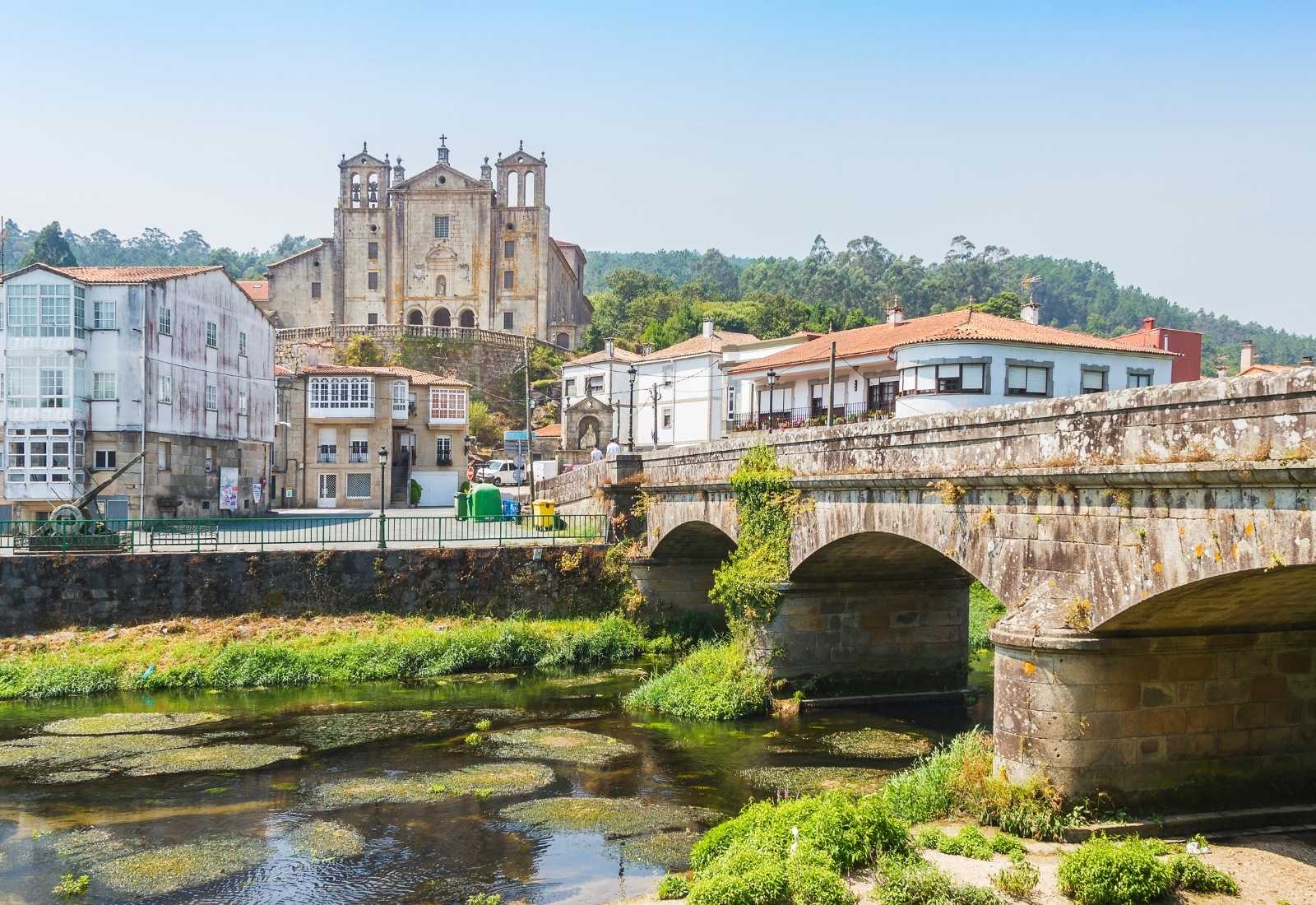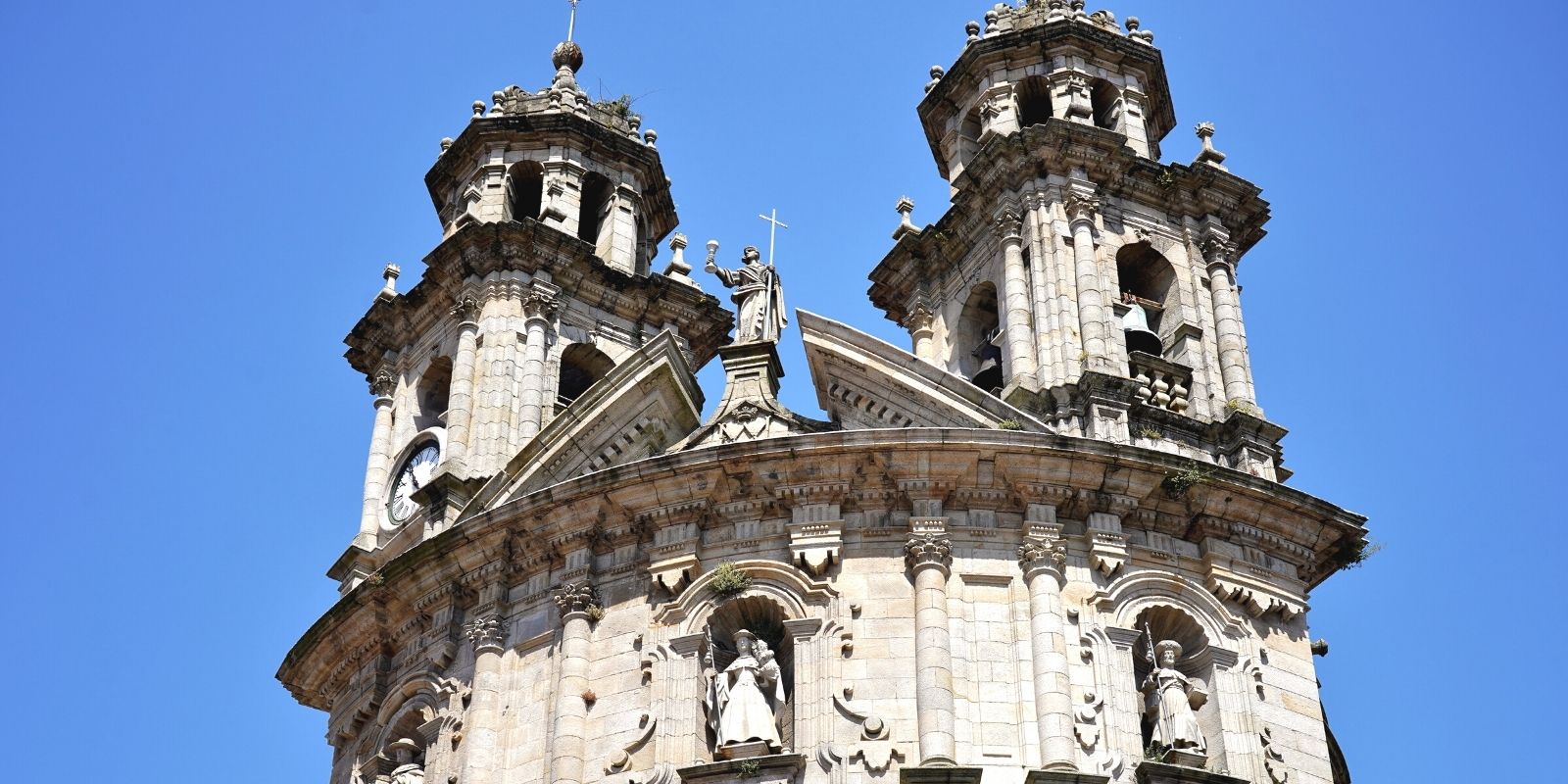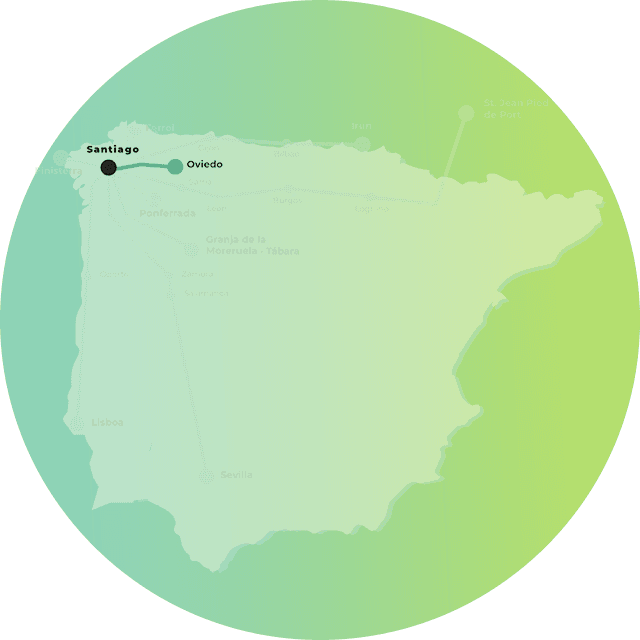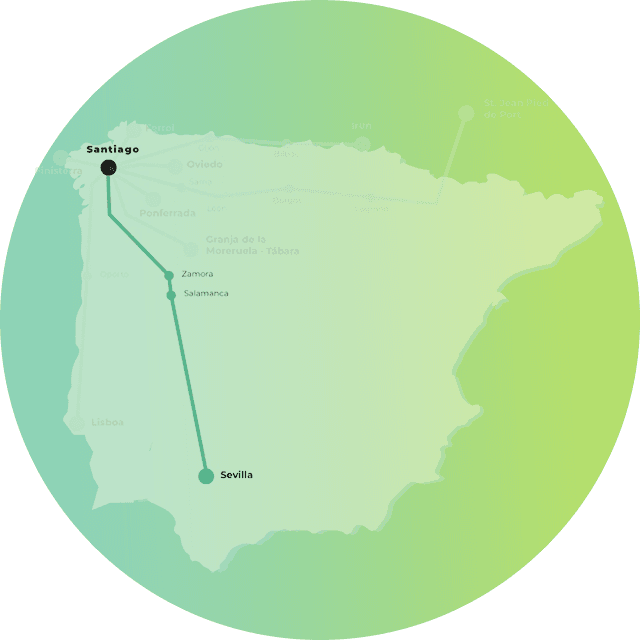The Portuguese Way
The second most popular route on the Camino de Santiago.
Starting in Lisbon, the Portuguese route of the Camino de Santiago unfolds along a beautiful south-to-north journey, connecting some of Portugal’s most historic and vibrant cities: Santarém, Coimbra, Porto, Barcelos, Ponte de Lima, and Valença do Minho.
From there, the Portuguese Way crosses the iconic international bridge over the Miño River and enters Galicia through the charming town of Tui. Once in Spain, the route winds through the entire province of Pontevedra, blending landscapes, tradition, and gastronomy, until it finally reaches Santiago de Compostela — the sacred city of the Apostle.
Services we offer on the Portuguese Camino to Santiago
Included in all our routes
- Accommodation booking selecting the best lodgings according to your budget.
- Luggage transport between stages.
- Practical information about the Camino in a detailed guide.
- Phone assistance en route we’re by your side for any questions or incidents.
- Travel insurance with broad coverage.
On group tours
- Accompanying guides professional support throughout the Camino.
- Support vehicle available during the stages.
Optional services
- Meals and diets: option to add breakfasts or half board.
- Private transfers to/from the point you need.
- Bicycle rental (mountain or electric bikes).
Map of the Portuguese Way
The map shows the full route of the Portuguese Way, from Lisbon, Portugal, to Santiago de Compostela, Galicia, Spain. This historic pilgrimage route, approximately 620 km long, passes through significant cities and towns such as Coimbra, Porto, Barcelos, Tui, Pontevedra, and Padrón.
At the bottom, the elevation profile of the route is displayed, famous for its moderate slopes and proximity to important rivers such as the Tajo, Duero, and Miño, as it enters Galicia. Each stage offers a unique experience, with a blend of Portuguese and Galician landscapes, and a rich cultural heritage, making it an unforgettable spiritual and physical journey.
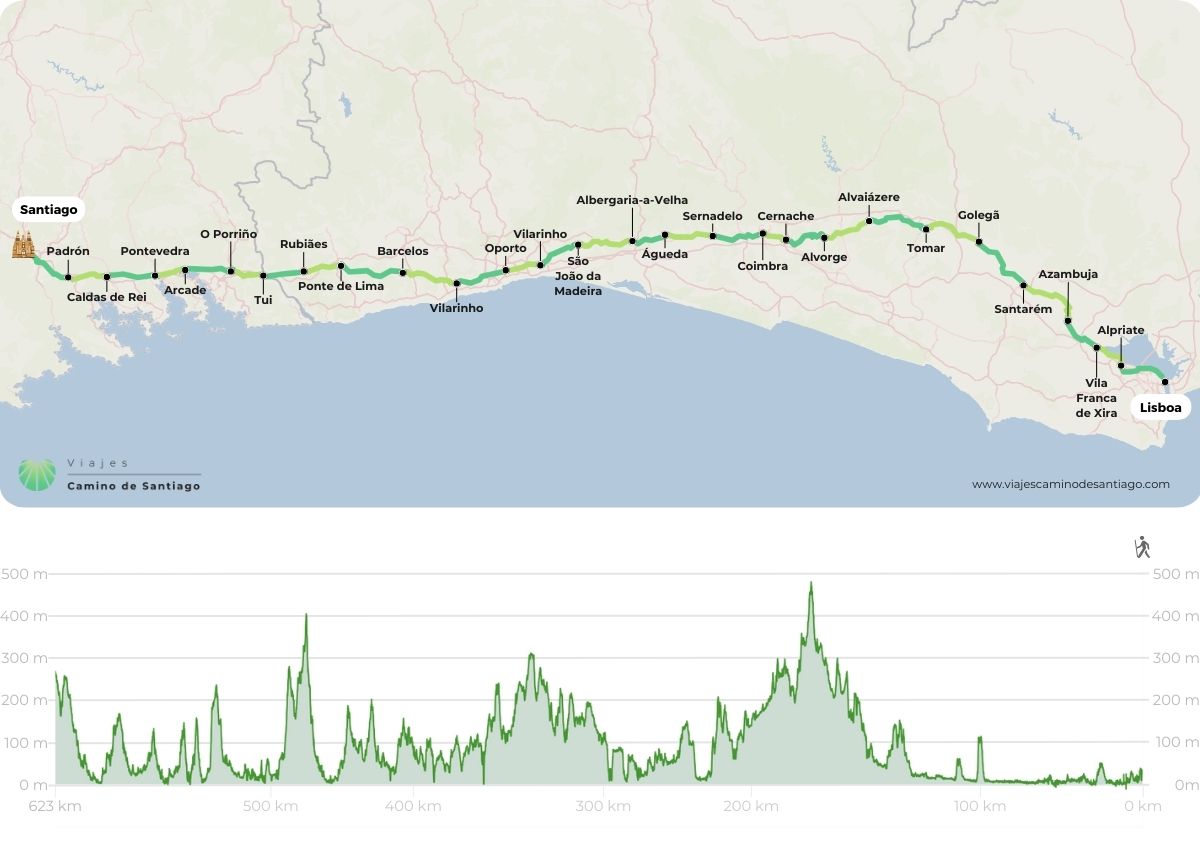
Information on the Portuguese Camino de Santiago
Why choose the Portuguese Way?
The Portuguese Camino features one of the gentlest route profiles of all the Camino de Santiago paths.
This route is designed to enjoy, learn from the diverse cultures of Portugal and Galicia, and immerse oneself in fascinating natural and rural landscapes. You will admire ancient forests and centuries-old stone crosses as you follow in the footsteps of other pilgrims who, like you, have traveled this route since the Middle Ages.
Following the path of the ancient Roman road Via XIX, well-preserved in many parts and a witness to centuries of history, this route offers a very accessible journey for pilgrims, as it doesn’t have significant elevation changes, making it the perfect choice for those looking for a gentler path.
What to see and do on the Portuguese Camino de Santiago?
The Portuguese Camino offers the opportunity to enjoy both Portugal and Galicia at the same time.
Where to start the Portuguese Way?
From Lisbon
The Portuguese Camino starts in the Portuguese capital. From here to Santiago de Compostela, it’s approximately 600 kilometers. If you wish to complete the entire route, you should plan for at least a month to cover the 27 stages.
Without a doubt, it will be a spectacular adventure where you’ll fully immerse yourself in the culture and history of Portugal until you reach its sister land, Galicia—two neighboring countries that share many similarities.
From Porto
Porto is the ideal city to start the Portuguese Camino. From here, the presence of the Camino becomes more evident thanks to better signage and a wider variety of services for pilgrims.
On the Portuguese Way from Porto to Santiago de Compostela, you’ll face 265 kilometers, which you can comfortably cover in 13 stages. You can even do the Portuguese Way by bike from Porto – Interior.
From Tui
If you have limited time to walk this route, starting the Portuguese Way from Tui is the perfect option to enjoy it. From here, you only need to cover 120 kilometers to Santiago de Compostela, ideal for a one-week holiday.
The Galician section of this route offers everything you need for an extraordinary experience: the best gastronomy of the Rías Baixas, wines with designated origin, beautiful landscapes of vineyards and crops, waterfalls and hot springs, as well as a rich historical and monumental heritage.
You might be interested: How to get to Tui?
Stages of the Portuguese Way
The Portuguese Camino de Santiago is a Jacobean route filled with history, spirituality, and natural beauty. Along its approximately 620 kilometers, from Lisbon to Santiago de Compostela, it passes through various stages that take you through stunning landscapes, picturesque villages, and monuments rich in meaning. Each section offers a unique experience, from the landscapes of Portugal to the green fields and hills of Galicia. Through these links, you will discover the main stages, their distances, points of interest, and helpful tips to make the most of this unforgettable adventure.
The villages along the Portuguese Way
History of the Portuguese Way
Let’s take a brief look at the history of the Portuguese Camino de Santiago.
Origin of the Portuguese Way
The Portuguese Way began to develop in the Middle Ages, after the discovery of the tomb of the Apostle James in Compostela, making use of the waterways, maritime routes, and land paths established by the Romans and Muslims. Its origin may, according to some historians, be traced to a political route for the reconquest and expansion of the Kingdom of León. However, the reality is that by the time Portugal emerged as an independent kingdom from Castile and León, two established routes already connected the cities of Coimbra and Santiago—one by land and the other by sea. This is why the waterways and maritime routes were the most commonly used, as they allowed for quicker travel. But sometimes these routes couldn’t be used due to severe storms, so land routes began to gain traction.
Golden Age
Undoubtedly, the key event that solidified the land route of the Portuguese Camino was the pilgrimage of Isabel of Portugal, known as Queen Saint, in the 14th century. In her will, the queen allocated a significant amount of funds to the maintenance and development of pilgrim hospitals in the Kingdom of Portugal, which greatly improved the pilgrimage paths and their infrastructure. Another factor that helped consolidate the Portuguese Camino de Santiago was the presence of the Order of the Knights of Santiago in Portugal. This order defended the border of Extremadura and provided protection to pilgrims, making the Camino much safer.
Centuries of Decline
Similar to the Camino Francés, there was a period of decline for the Portuguese route due to the challenges faced by Europe in the 16th and 17th centuries.
Modern Revival
A new resurgence occurred at the end of the 20th century, closely following the rise of the Camino Francés. Thanks to the efforts of public institutions and pilgrim associations from Galicia and northern Portugal, efforts were made to mark the route, recovering the path known as the Central Camino. Soon after, other routes such as the Portuguese Coastal Camino and the Inland Camino, along with other alternative paths, were added. The success of this revitalization was such that the Portuguese route has become the second most frequented Camino de Santiago route, behind the Camino Francés.
Frequently asked questions about the Portuguese Way
The Portuguese Way has become increasingly popular in recent years, positioning itself as the second most traveled route after the French Way. Although it does not reach the same level of traffic as the French route, it is still a busy option, especially from Porto or Tui. At these points, you will find a constant flow of pilgrims, especially during the high season (spring and summer).
One of the reasons for its growing popularity is that it is an accessible route with less physically demanding stages. In addition, it offers excellent infrastructure for pilgrims, with numerous hostels, hotels and services at each stage.
If you are wondering which route is easier between the Portuguese Way and the French Way, the answer depends on several factors. However, in general, the Portuguese Way is considered more accessible for most pilgrims.
The Portuguese Way has flatter and gentler terrain, especially on its most popular stretch from Porto to Santiago de Compostela. The stages are less demanding and the climate is more moderate, an ideal option for those looking for a less physically challenging route.
On the other hand, the French Way, although more famous and with a highly developed infrastructure, presents stages with greater unevenness, especially in the first sections that cross the Pyrenees and some mountainous areas in the provinces of León and Galicia. Although it is an incredibly popular route full of history, the physical effort is greater, so it requires better physical preparation.
The Portuguese Camino de Santiago is one of the longest routes of the Camino de Santiago, with about 620 km generally divided into 27 stages. Therefore, divided like this, it takes 27 days to complete the Portuguese Camino de Santiago on foot.
Each stage would be the distance you travel in one day, from the starting location to the end of the walk, where you will spend the night. The stages can vary in distance and difficulty, and it is important to note that they can be adjusted according to your pace and physical condition. Some pilgrims choose to divide certain long or difficult stages, or lengthen those that are shorter or easier to walk. It all depends on having a place to sleep.
The Portuguese Way, although it is one of the longest routes, with 27 stages and 620 kilometers from Lisbon, is not considered very difficult. Of all of them, there are two stages considered difficult, due to their distance and relief: stage 20 between Ponte de Lima and Rubiães, and stage 19 between Barcelos – Ponte de Lima.
The Portuguese Camino de Santiago begins in the city of Lisbon, the capital of Portugal.
Throughout its approximately 620 kilometers, the Portuguese Way is divided into the following 27 stages:
- Lisboa – Alpriate (21,7 km)
- Alpriate – Vila Franca de Xira (18,8 km)
- Vila Franca de Xira – Azambuja (20 km)
- Azambuja – Santarém (33 km)
- Santarém – Golegã (30,7 km)
- Golegã – Tomar (31,3 km)
- Tomar – Alvaiázere (31,7 km)
- Alvaiázere – Alvorge (22,7 km)
- Alvorge – Cernache (26,1 km)
- Cernache – Coimbra (11,3 km)
- Coimbra – Sernadelo (24,8 km)
- Sernadelo – Águeda (23,5 km)
- Águeda – Albergaria-a-Velha (15,8 km)
- Albergaria-a-Velha – São João da Madeira (28,8 km)
- São João da Madeira – Grijó (19 km)
- Grijó – Oporto (15,1 km)
- Oporto – Vilarinho (26,5 km)
- Vilarinho – Barcelos (27,3 km)
- Barcelos – Ponte de Lima (34,5 km)
- Ponte de Lima – Rubiães (17,4 km)
- Rubiães – Tui (19,1 km)
- Tui – O Porriño (18,7 km)
- O Porriño – Arcade (23 km)
- Arcade – Pontevedra (12 km)
- Pontevedra – Caldas de Reis (21 km)
- Caldas de Reis – Padrón (18,6 km)
- Padrón – Santiago de Compostela (24,3 km)
This division can be modified, depending on the preferences and possibilities of each person, always taking into account having a place to spend the night.
In all the routes and stages of the Camino de Santiago there is a lot of beauty, nature and heritage. Of course, all this, between dozens of kilometers, with sections and stages that are easier to travel and others that are more complicated. The latter are characterized, above all, by having large slopes and, sometimes, accumulating many kilometers of ascent.
Below we want to inform you of the most commented stages and climbs due to their physical demands on the Portuguese Way. Some of them, for many, are part of the hardest stages of the Camino de Santiago.
- Codesal – Alto da Portela Grande de Labruja
If the Portuguese Way is quite flat and accessible for any pilgrim, it is not exempt from some climbs. In Portugal, on stage number 20 between Ponte de Lima and Rubiães, walkers face the Alto de A Portela Grande in Labruja. In 4.2 km of distance you climb about 300 m between forests and beautiful landscapes in a short stage but with a demanding challenge.
- Barcelos – Ponte de Lima
This is one of the longest stages (34.5 km) of the Camino Portugues and without a doubt one of the hardest. The section between Barcelos and Ponte de Lima is famous for its length and steep slopes, especially near Portela. The unevenness and length of the stage make this journey a real challenge, even for the most experienced pilgrims.
Some stages of the Portuguese Way stand out for their natural beauty, historical richness and cultural significance. Below, I present a selection of the most beautiful stages of the Portuguese Way:
- Valença do Minho – Tui
Although this stage can be considered part of the border between Portugal and Spain, it offers spectacular views along the Miño River. Valença do Minho, with its impressive fortress, is a place of great beauty and historical value. Crossing the International Bridge to Tui is an experience that many pilgrims describe as magical.
- Tui – O Porriño
This stage marks the entrance to Galicia from Portugal, crossing the Tui International Bridge. Here, the Camino takes you through lush forests and quiet country lanes. The city of Tui, with its cathedral fortress, offers spectacular panoramic views of the Miño River and is a perfect place to start this beautiful stage.
- Redondela – Pontevedra
This stage takes you through lush eucalyptus forests and green fields, offering a charming contrast to the small villages you will find along the way. In addition, Pontevedra is one of the most beautiful cities in Galicia, with a well-preserved historic center and a vibrant cultural life.
- Pontevedra – Caldas de Reis
One of the most beautiful stages of the Portuguese Way, this section combines the best of Galician nature. You will pass ancient stone bridges, green valleys and crystal clear rivers. Furthermore, upon arrival in Caldas de Reis you are rewarded with its natural hot springs, perfect for relaxing your muscles after a day of walking.
- Caldas de Reis – Padrón
Known for its tranquility and natural beauty, this stage takes you through the greenest landscapes of the Portuguese Way. The journey between Caldas de Reis and Padrón is a delight for the senses, with numerous streams and old mills that line the road. Padrón is famous for being the place where, according to tradition, the boat that transported the remains of the Apostle Santiago arrived.
Among all of them, choosing the most beautiful stage can be subjective and very personal, since it depends on the tastes and preferences of each pilgrim. However, one of the most valued stages and that is frequently highlighted for its natural, scenic and historical beauty is the one that goes from Pontevedra to Caldas de Reis. Among the reasons why it is considered the most beautiful, we highlight:
- Natural Landscapes: This stage crosses lush Galician forests, trails surrounded by vineyards and agricultural fields. The tranquility and greenery of the surroundings provide a comforting experience deeply connected to nature.
- Medieval Rivers and Bridges: Along the way, pilgrims cross crystalline rivers on ancient stone bridges, such as the famous Lérez River Bridge, which adds a historical and picturesque touch to the journey.
- Galician Villages: The route passes through small villages that preserve the traditional Galician essence, where pilgrims can enjoy the local hospitality and the rich gastronomy of the region.
- Hot Springs in Caldas de Reis: The stage ends in Caldas de Reis, known for its natural hot springs, which have attracted visitors since Roman times. It is the perfect place to relax after a day of walking.
Posts related to the Portuguese Way
Other routes of the Camino de Santiago
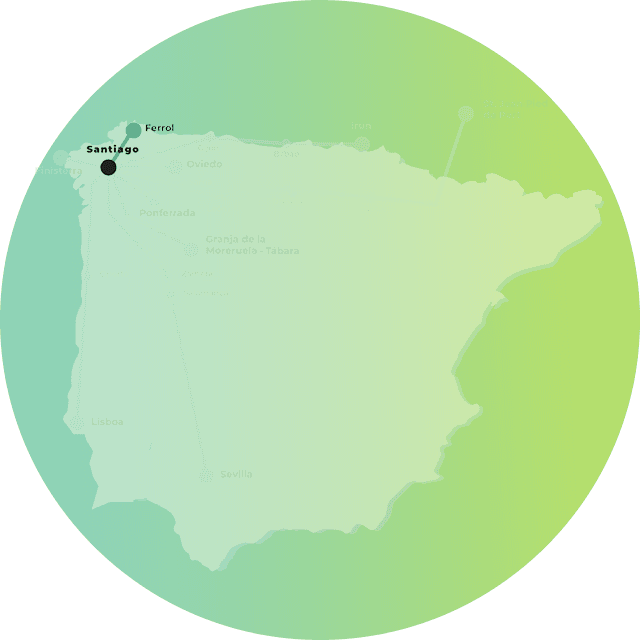
English Way
From Ferrol to Santiago de Compostela. Delve into the culture of villages of great military, naval and historical importance. 5 Etapas | 125 km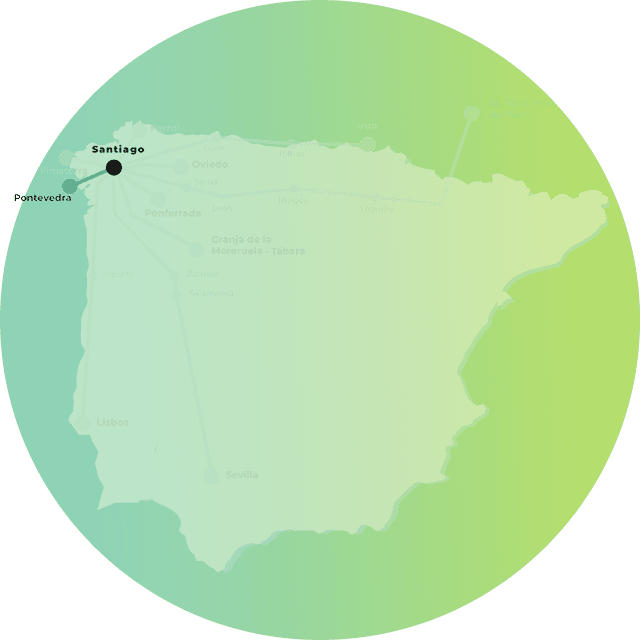
Father Sarmiento Way
The Father Sarmiento Way links Pontevedra to Santiago de Compostela, offering a scenic journey through beautiful landscapes. 6 stages | 142 km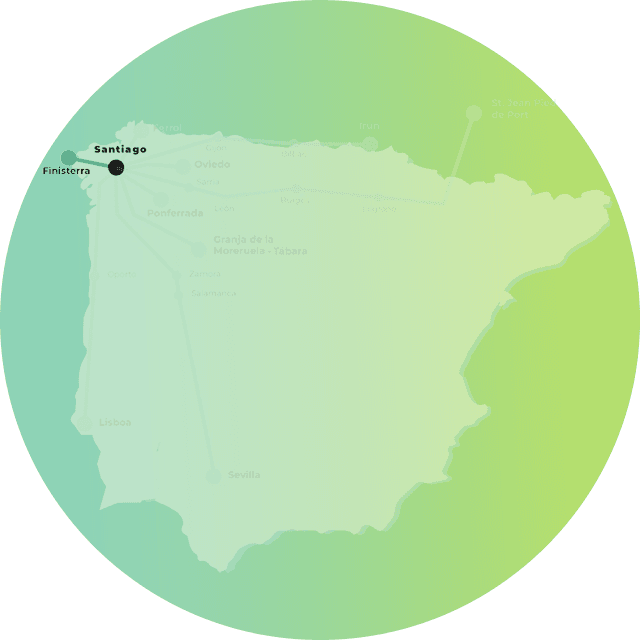
Finisterre and Muxía Way
From Santiago de Compostela to Muxía. A mystical and spiritual journey to the ends of the Earth 5 stages | 120 km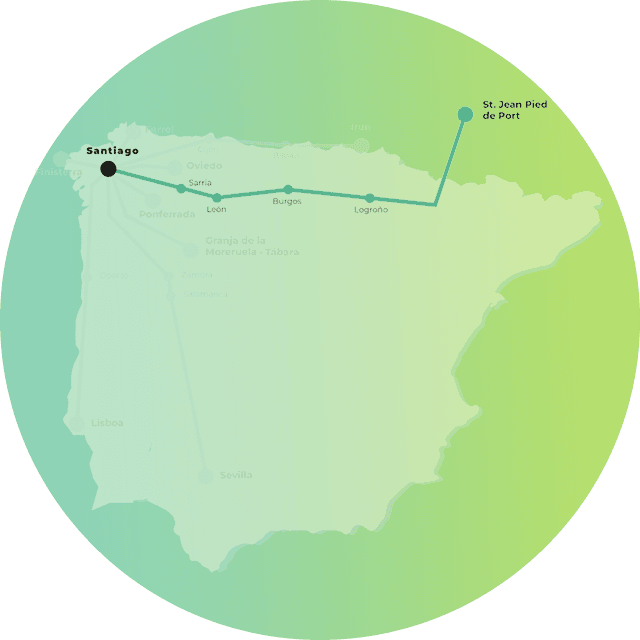
French Way
From Saint-Jean-Pied-de-Port to Santiago, trace Charlemagne’s path through the Pyrenees and trek 800 km on the French Way. 33 stages | 768 km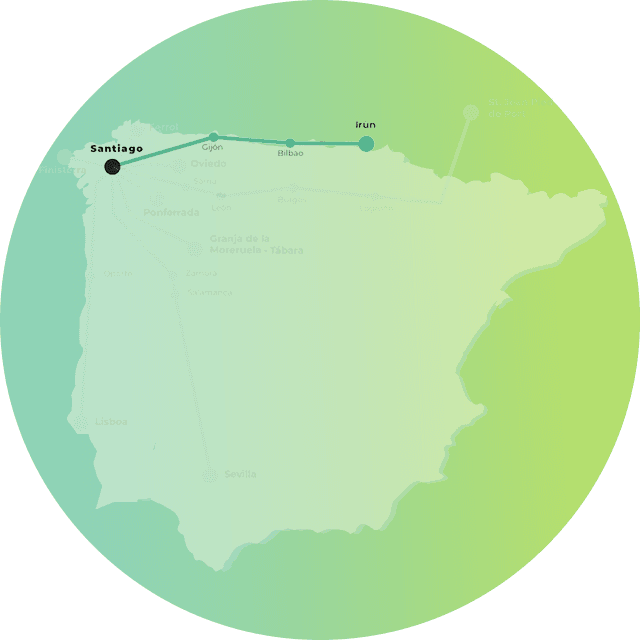
Northern Way
From Santiago de Compostela to Muxía. An unforgettable experience with breathtaking scenery 34 Stages | 820 km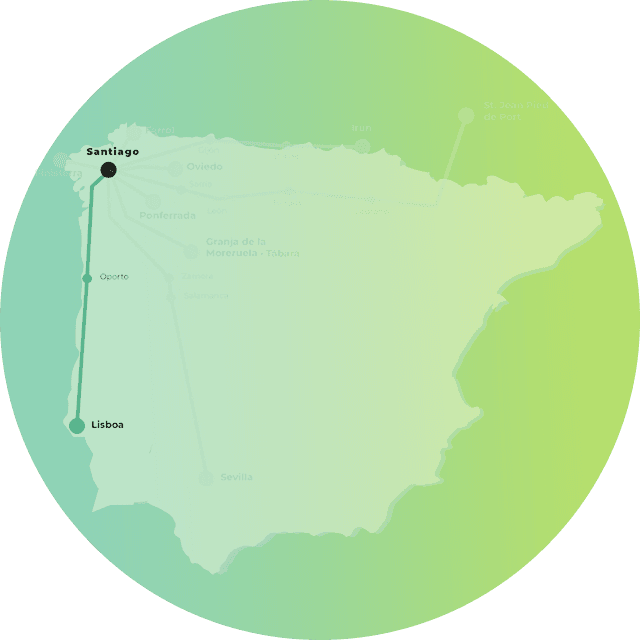
Portuguese Way
Starts in Lisbon and leads to Santiago de Compostela, offering a scenic journey through charming towns, coastal views, and culture. 27 stages | 620 km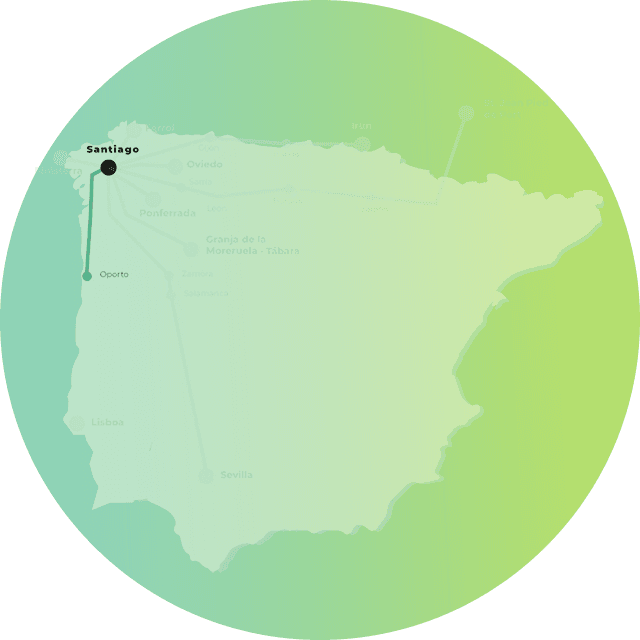
Portuguese Way along the coast
From Oporto to Santiago de Compostela. Total 194 km - 8 stages 8 Stages | 194 km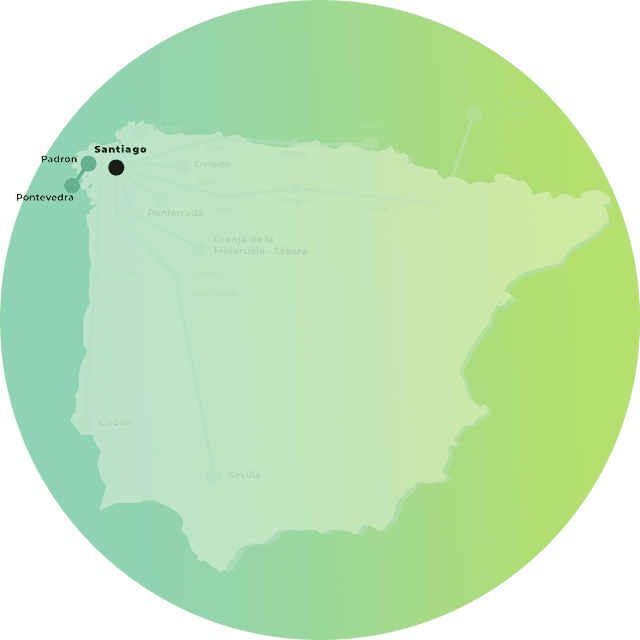
Portuguese Way: spiritual variant
From Pontevedra to Padrón. Total 81 km - 3 stages 3 stages | 81 km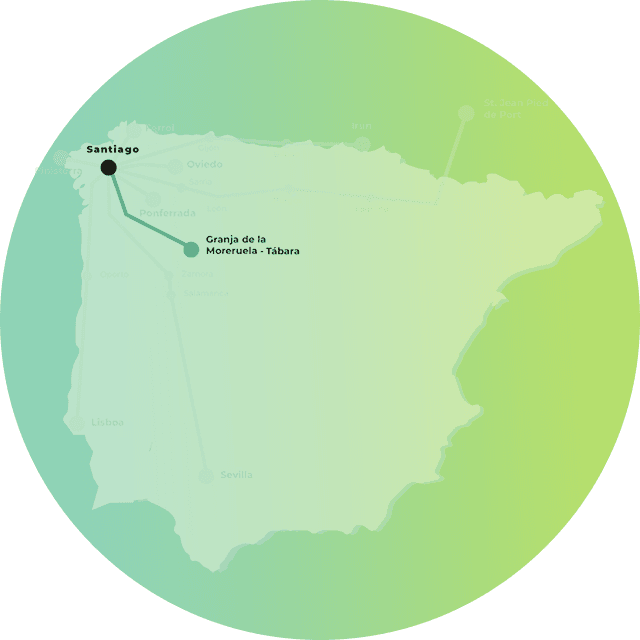
Sanabrian Way
From Granja de Moreruela to Santiago de Compostela. Total 365 km - 13 stages 13 stages | 365 km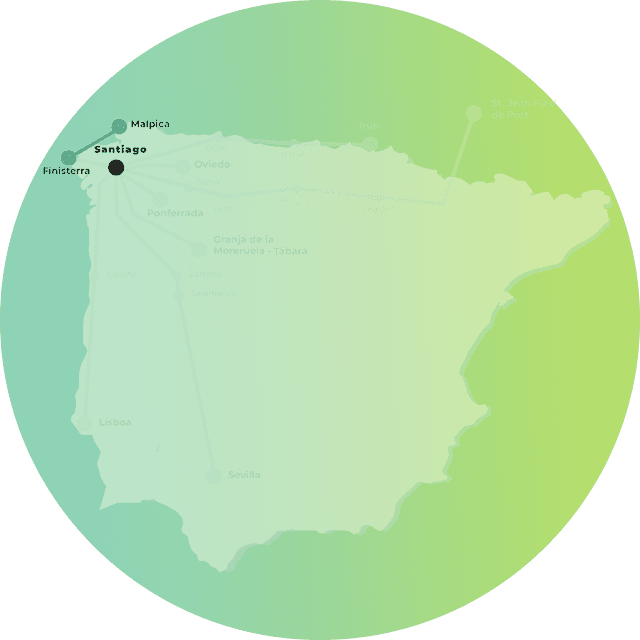
Way of the Lighthouses
From Malpica to Finisterre. A 200-kilometer journey along the coast and through the wildest of nature 8 stages | 195 km